Jade Varden's Blog, page 45
January 13, 2014
Writing 101: Let's Talk About Title Case
I've Noticed a Disturbing Trend Among Authors, and I Can Stay Silent No More. Title case, which I just demonstrated in my last sentence, is being used way too much...and incorrectly, at that.
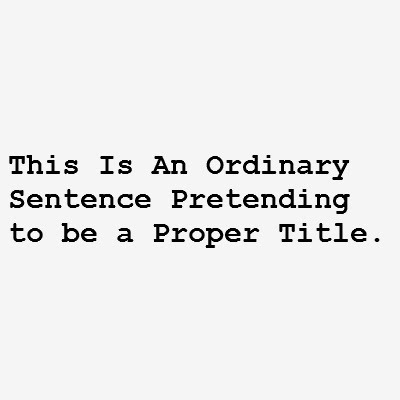
It's Not a Title!
Writing perfectly in your novels isn't enough. If I get one more title case quote recommendation on Goodreads, my wrath will no know bounds. I've pointed out many, many times that you must always conduct yourself like an author. And if you're using title case incorrectly -- anywhere -- I'm going to see it. And I'm putting you on my Do Not Read list.
Scoff if you like, but many readers will blacklist an author for a whole lot less. There are too many books and too many authors and I don't have to read incorrect title casing for anyone, thank you very much.
So. With that said, let's talk about the right way to use title case.
In titles. This is the one and only time that it is accepted to capitalize the first letter in every word of a phrase. Let's look at some examples:
Rats Spread Plague to 14 States
The above is a headline from a blog post, not unlike the headline at the top of this blog post. It's in title case...because it is, by definition, a title.
Scientists Believe Rat Carriers Could Be Mutants
The above is a subtitle within the blog post about the diseased rats. This subtitle is exactly like the one just below the picture in this blog post. It's a subtitle, and therefore a title, so of course title case is appropriate.
"Rats live for up to three weeks carrying the plague," says Prof. D.M. Bauguard of the Better Health Institute and Research Center.
The above is a quote from the Professor, so regular sentence case is used. Why? Because it's not a [expletive deleted] title, that's why. Quote are not titles. Quit giving them title case already! Improper capitalization reflects badly upon you as an author, and it renders all your books suspect. Don't turn readers off before you get the chance to win them over.

It's Not a Title!
Writing perfectly in your novels isn't enough. If I get one more title case quote recommendation on Goodreads, my wrath will no know bounds. I've pointed out many, many times that you must always conduct yourself like an author. And if you're using title case incorrectly -- anywhere -- I'm going to see it. And I'm putting you on my Do Not Read list.
Scoff if you like, but many readers will blacklist an author for a whole lot less. There are too many books and too many authors and I don't have to read incorrect title casing for anyone, thank you very much.
So. With that said, let's talk about the right way to use title case.
In titles. This is the one and only time that it is accepted to capitalize the first letter in every word of a phrase. Let's look at some examples:
Rats Spread Plague to 14 States
The above is a headline from a blog post, not unlike the headline at the top of this blog post. It's in title case...because it is, by definition, a title.
Scientists Believe Rat Carriers Could Be Mutants
The above is a subtitle within the blog post about the diseased rats. This subtitle is exactly like the one just below the picture in this blog post. It's a subtitle, and therefore a title, so of course title case is appropriate.
"Rats live for up to three weeks carrying the plague," says Prof. D.M. Bauguard of the Better Health Institute and Research Center.
The above is a quote from the Professor, so regular sentence case is used. Why? Because it's not a [expletive deleted] title, that's why. Quote are not titles. Quit giving them title case already! Improper capitalization reflects badly upon you as an author, and it renders all your books suspect. Don't turn readers off before you get the chance to win them over.
Published on January 13, 2014 05:30
January 12, 2014
Indie News: Indies Prefer Tradition
A new survey shows that the majority of authors, even indies, still prefer traditionally publishing to taking the indie route.

The Road More Traveled
Digital Book World and Writer's Digest partnered for the Author Survey, which shows exactly where writers stand when it comes to choosing their path.
Among traditionally-published authors, only 7.5 percent said they wanted to self-publish. Among authors still aspiring to be published, 10.1 percent said they would take self-publishing over being more traditionally published. Only 35.1 percent of self-published authors said they preferred taking the indie route, and only 29.8 percent of hybrid authors preferred to self-publish alone.
More than 9,000 writers participated in the 2014 Author's Survey, with the majority of participants stating they had not yet published any work. The vast majority of authors who took the survey are fiction writers (to the tune of over 80 percent).

The Road More Traveled
Digital Book World and Writer's Digest partnered for the Author Survey, which shows exactly where writers stand when it comes to choosing their path.
Among traditionally-published authors, only 7.5 percent said they wanted to self-publish. Among authors still aspiring to be published, 10.1 percent said they would take self-publishing over being more traditionally published. Only 35.1 percent of self-published authors said they preferred taking the indie route, and only 29.8 percent of hybrid authors preferred to self-publish alone.
More than 9,000 writers participated in the 2014 Author's Survey, with the majority of participants stating they had not yet published any work. The vast majority of authors who took the survey are fiction writers (to the tune of over 80 percent).
Published on January 12, 2014 05:30
January 11, 2014
Books on Film: The Princess Bride
Unless you've come here from the planet Twilar, you've at least heard of The Princess Bride. And if you're like most people, you've seen the movie at least 10 times. After all, doesn't it come on cable like every day? But before it was a movie that everyone can quote, it was a book...though its origins still remain a mystery to many.

The Book
William Goldman wrote The Princess Bride in 1973, and the world was for ever changed. Now, the origins of the book are shrouded in mystery because Goldman is quite the jokester. At the top of the book he explains that it's an abridgment of The Princess Bride by S. Morgenstern, which does not exist. Morgenstern did not exist, either, until Goldman himself wrote a novel under this pseudonym (presumably to further his joke).
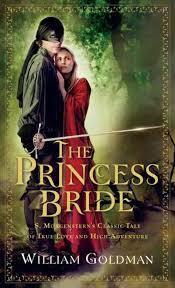
Buttercup lives on a farm in rural Florin, where she takes pleasure in being nasty to farm hand Westley. She calls him "farm boy" and makes him work for her. All he ever says to her is "as you wish." And, as the story goes, she comes to realize that he's really saying "I love you" to her. She loves him back.
But if that was the whole story, it would be boring and no one would ever quote it. That's just the beginning of the story. Buttercup and Westley are torn apart after he leaves to acquire enough money so they can marry. She hears that his ship was captured by the Dread Pirate Roberts, from whom no one escapes.
She mourns him, and eventually agrees to marry Prince Humperdinck. He's the heir apparent to the throne of Florin, and though she doesn't love him she decides to let him wed her...for what does it matter, now? But all goes astray when Buttercup is kidnapped by three outlaws: the genius Vizzini, sword master Inigo Montoya and a mountain of a man named Fezzik. But there is a fly in the ointment: a masked man, wearing all black, is following them. Things start to get really great from there.
The Movie
The book was adapted into a movie in 1987, and it's been watched millions of times since. Rob Reiner directed and co-produced the film, and I firmly believe he's the only one who could have adapted it so well. Reiner, funny himself, captures the comedic flavor of the novel perfectly. It's irreverent and a little silly, and that's part of what makes the story so great.
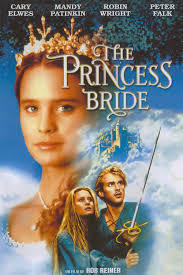
The movie is really a story within a story. It opens with a sick young boy (Fred Savage), who's home in bed. Grandfather (Peter Falk) is on hand to sit with him, and he's brought a book. The young boy balks at first (books are boring), but Grandfather slowly draws him in because the tale has swordfights, adventure and lots of action. The story is interrupted a few times with comments and banter between the two, and it makes the movie even richer.
After Buttercup is captured, the Man in Black slowly thwarts all three kidnappers. Only then is it revealed that he is actually Westley, alive and well after all. But Humperdinck is on their trail, so they are forced to go on the run together. Humperdinck is actually a villain, and he engineered the kidnapping in the first place.
There's lots more after that, including the famous scene with Inigo where repetition is so key. But this version of the film almost never came to be.
Fox wanted to turn the novel into a film right away. They paid Goldman a cool half-million dollars for the rights to the book, and they even hired a director. But when the head of production at Fox was fired, the project was put on hiatus. Goldman bought back his own film rights, on his own dime. The book almost became a movie again when Christopher Reeve was interested in being Westley, but finally Rob Reiner decided he was going to do it. He received funding from Norman Lear, the one and only Archie Bunker, and the rest is history.
What Got Adapted?
Reiner created a faithful adaptation of the book, largely owed to the fact that Goldman worked on the screenplay himself. Some of the beginning of the book is condensed for the screen (Buttercup doesn't realize her love so quickly on the page), and in the book she's faced with sharks instead of screaming eels in the water.
There is more backstory in the book, particularly around Inigo and Fezzik. In the book they go on a much longer journey to find Westley, and the end is a bit less direct than in the film. But the story very closely mirrors that in the book, and in the film version you get Billy Crystal. I suggest you enjoy both the book and the film version of this story...at least 10 times.

The Book
William Goldman wrote The Princess Bride in 1973, and the world was for ever changed. Now, the origins of the book are shrouded in mystery because Goldman is quite the jokester. At the top of the book he explains that it's an abridgment of The Princess Bride by S. Morgenstern, which does not exist. Morgenstern did not exist, either, until Goldman himself wrote a novel under this pseudonym (presumably to further his joke).

Buttercup lives on a farm in rural Florin, where she takes pleasure in being nasty to farm hand Westley. She calls him "farm boy" and makes him work for her. All he ever says to her is "as you wish." And, as the story goes, she comes to realize that he's really saying "I love you" to her. She loves him back.
But if that was the whole story, it would be boring and no one would ever quote it. That's just the beginning of the story. Buttercup and Westley are torn apart after he leaves to acquire enough money so they can marry. She hears that his ship was captured by the Dread Pirate Roberts, from whom no one escapes.
She mourns him, and eventually agrees to marry Prince Humperdinck. He's the heir apparent to the throne of Florin, and though she doesn't love him she decides to let him wed her...for what does it matter, now? But all goes astray when Buttercup is kidnapped by three outlaws: the genius Vizzini, sword master Inigo Montoya and a mountain of a man named Fezzik. But there is a fly in the ointment: a masked man, wearing all black, is following them. Things start to get really great from there.
The Movie
The book was adapted into a movie in 1987, and it's been watched millions of times since. Rob Reiner directed and co-produced the film, and I firmly believe he's the only one who could have adapted it so well. Reiner, funny himself, captures the comedic flavor of the novel perfectly. It's irreverent and a little silly, and that's part of what makes the story so great.

The movie is really a story within a story. It opens with a sick young boy (Fred Savage), who's home in bed. Grandfather (Peter Falk) is on hand to sit with him, and he's brought a book. The young boy balks at first (books are boring), but Grandfather slowly draws him in because the tale has swordfights, adventure and lots of action. The story is interrupted a few times with comments and banter between the two, and it makes the movie even richer.
After Buttercup is captured, the Man in Black slowly thwarts all three kidnappers. Only then is it revealed that he is actually Westley, alive and well after all. But Humperdinck is on their trail, so they are forced to go on the run together. Humperdinck is actually a villain, and he engineered the kidnapping in the first place.
There's lots more after that, including the famous scene with Inigo where repetition is so key. But this version of the film almost never came to be.
Fox wanted to turn the novel into a film right away. They paid Goldman a cool half-million dollars for the rights to the book, and they even hired a director. But when the head of production at Fox was fired, the project was put on hiatus. Goldman bought back his own film rights, on his own dime. The book almost became a movie again when Christopher Reeve was interested in being Westley, but finally Rob Reiner decided he was going to do it. He received funding from Norman Lear, the one and only Archie Bunker, and the rest is history.
What Got Adapted?
Reiner created a faithful adaptation of the book, largely owed to the fact that Goldman worked on the screenplay himself. Some of the beginning of the book is condensed for the screen (Buttercup doesn't realize her love so quickly on the page), and in the book she's faced with sharks instead of screaming eels in the water.
There is more backstory in the book, particularly around Inigo and Fezzik. In the book they go on a much longer journey to find Westley, and the end is a bit less direct than in the film. But the story very closely mirrors that in the book, and in the film version you get Billy Crystal. I suggest you enjoy both the book and the film version of this story...at least 10 times.
Published on January 11, 2014 05:30
January 9, 2014
Writing 101: The Great Cheap Book Debate
Depending on who you ask, cheap ebooks are either a scourge upon society and the potential death of all literature...or an amazing way to affordably spread the written word. I got pulled into the great cheap book debate rather unexpectedly recently. Much of the argument has since taken place between me...and me.

Why Cheap Books Are Bad
I search for myself quite regularly on Google -- not because I'm vain (though for the record, I am) but because I advise all indie authors to do this. I stumbled across some of my own blog posts being plagiarized one day, and I've since appointed myself as my own watchdog. So imagine my surprise when I found my name appearing in a debate about cheap books...and how evil they are.
I was introduced into the topic in the comments section, after I'd already read through an impassioned blog post and a very persuasive argument that nearly inspired me to run right to my Amazon page and lift the price on all my novels.
And she's right. Writing a book is a massive undertaking. It requires research and thought and plotting and pacing and sweating and crying...and that all happens before you get to the really hard part, editing. I took almost a year to write my last book, and it doesn't quite hit the 60,000 word mark. Is there any amount of money that can really compensate me for all the nights I sat on the couch, staring at the screen and trying to dig through my imagination to make the words appear?
Maybe it's $0.99, the price of my newest book. I have to sell precisely 117 books before I earn back the money I spent on it, and that's with zero time and labor put into the thing. So by Hooper's logic, I'm definitely under-pricing my work. That's exactly how I got brought into the discussion, as a matter of fact. A commenter pointed out that my books are cheap, yet they're worth so much more (thanks!).
I'd like to believe that's true, but I'm not going to change the price of my books based on this blog post -- no matter how sensible or impassioned or logical the plea. Because I really, really like the fact that people can very, very easily get free and cheap books. I think all books should be cheap books. I think people should be swimming in books.
Maybe that will encourage them to start reading those books.
Devils' Advocate
The market is full of cheap and free books, and thanks to ereaders they're more accessible than ever. And you know what? The market needs a whole lot more cheap books. In the past 10 years, the US illiteracy rate has not moved. We are losing an extremely important battle and it's terrifying.
The written word is one of the oldest art forms mankind ever created, and as of the writing of this post there are 32 million adults who cannot read in the United States alone. That's 14% of the adult population. And if you're not in tears yet, here's more: 21% of adults in the US read below a 5th grade level. Around 63% of prison inmates can't read, by the way. Notice how off that seems? Around 14% of all adults can't read, and 63% of the adults in prison can't read. Could there possibly be a connection here, somewhere?
Almost 19% of high school graduates can't read, and of all the illiterate people in the world 66% of them are female.
Studies show that two-thirds of all children who cannot read well by the end of the 4th grade will end up in prison or on welfare. One in four children in America will grow up without learning how to read. Low literacy levels have been linked to higher occurrences of juvenile detention, teen pregnancy and high healthcare costs.
And despite all the cheap books already out there, 44% of Americans don't read even one book in a calendar year. Of those who can read, many do so poorly. Around half of all Americans, 50%, read so badly they can't even follow the label on a prescription bottle of drugs.
We're going to need a lot more free books, I think.
Money and Me
And now for the disclaimer. I'm not the best person to reasonably argue any debate that concerns any amount of money. I personally believe we ought to do away with money and go back to a system of bartering, so I'm a subversive.
But at the end of the day, most indie authors don't make much money no matter what they do. Most traditionally published authors don't make a lot of money, no matter what they and their agents do. You have to be a consistent bestseller to earn all of your income from writing novels, or you have to be a prolific writer with a healthy fan base that purchases everything you write. The vast majority of indie authors make very little money from their efforts.
I've said many times that self-published authors shouldn't price their books based on the amount of money they hope to earn, because chances are you won't make any. You should always price your books based upon your market, and that's what any professional retailer or salesperson will tell you. The amount of love and time and tears you pour into your books can never be equaled, anyway, and even if it could money is a cold substitute for just one sincere fan letter. And besides, if we're going to price books based on value then nobody would ever be able to afford Gone With the Wind.
So what's my opinion on the great cheap book debate? ...Maybe all books should be free. If that makes it possible for everyone in the world to read, I'll be the first to slash my prices right down to zero.

Why Cheap Books Are Bad
I search for myself quite regularly on Google -- not because I'm vain (though for the record, I am) but because I advise all indie authors to do this. I stumbled across some of my own blog posts being plagiarized one day, and I've since appointed myself as my own watchdog. So imagine my surprise when I found my name appearing in a debate about cheap books...and how evil they are.
I was introduced into the topic in the comments section, after I'd already read through an impassioned blog post and a very persuasive argument that nearly inspired me to run right to my Amazon page and lift the price on all my novels.
And she's right. Writing a book is a massive undertaking. It requires research and thought and plotting and pacing and sweating and crying...and that all happens before you get to the really hard part, editing. I took almost a year to write my last book, and it doesn't quite hit the 60,000 word mark. Is there any amount of money that can really compensate me for all the nights I sat on the couch, staring at the screen and trying to dig through my imagination to make the words appear?
Maybe it's $0.99, the price of my newest book. I have to sell precisely 117 books before I earn back the money I spent on it, and that's with zero time and labor put into the thing. So by Hooper's logic, I'm definitely under-pricing my work. That's exactly how I got brought into the discussion, as a matter of fact. A commenter pointed out that my books are cheap, yet they're worth so much more (thanks!).
I'd like to believe that's true, but I'm not going to change the price of my books based on this blog post -- no matter how sensible or impassioned or logical the plea. Because I really, really like the fact that people can very, very easily get free and cheap books. I think all books should be cheap books. I think people should be swimming in books.
Maybe that will encourage them to start reading those books.
Devils' Advocate
The market is full of cheap and free books, and thanks to ereaders they're more accessible than ever. And you know what? The market needs a whole lot more cheap books. In the past 10 years, the US illiteracy rate has not moved. We are losing an extremely important battle and it's terrifying.
The written word is one of the oldest art forms mankind ever created, and as of the writing of this post there are 32 million adults who cannot read in the United States alone. That's 14% of the adult population. And if you're not in tears yet, here's more: 21% of adults in the US read below a 5th grade level. Around 63% of prison inmates can't read, by the way. Notice how off that seems? Around 14% of all adults can't read, and 63% of the adults in prison can't read. Could there possibly be a connection here, somewhere?
Almost 19% of high school graduates can't read, and of all the illiterate people in the world 66% of them are female.
Studies show that two-thirds of all children who cannot read well by the end of the 4th grade will end up in prison or on welfare. One in four children in America will grow up without learning how to read. Low literacy levels have been linked to higher occurrences of juvenile detention, teen pregnancy and high healthcare costs.
And despite all the cheap books already out there, 44% of Americans don't read even one book in a calendar year. Of those who can read, many do so poorly. Around half of all Americans, 50%, read so badly they can't even follow the label on a prescription bottle of drugs.
We're going to need a lot more free books, I think.
Money and Me
And now for the disclaimer. I'm not the best person to reasonably argue any debate that concerns any amount of money. I personally believe we ought to do away with money and go back to a system of bartering, so I'm a subversive.
But at the end of the day, most indie authors don't make much money no matter what they do. Most traditionally published authors don't make a lot of money, no matter what they and their agents do. You have to be a consistent bestseller to earn all of your income from writing novels, or you have to be a prolific writer with a healthy fan base that purchases everything you write. The vast majority of indie authors make very little money from their efforts.
I've said many times that self-published authors shouldn't price their books based on the amount of money they hope to earn, because chances are you won't make any. You should always price your books based upon your market, and that's what any professional retailer or salesperson will tell you. The amount of love and time and tears you pour into your books can never be equaled, anyway, and even if it could money is a cold substitute for just one sincere fan letter. And besides, if we're going to price books based on value then nobody would ever be able to afford Gone With the Wind.
So what's my opinion on the great cheap book debate? ...Maybe all books should be free. If that makes it possible for everyone in the world to read, I'll be the first to slash my prices right down to zero.
Published on January 09, 2014 05:30
January 8, 2014
Writing 101: Write As Who You Are
Are you funny? Do your friends laugh a lot when you share little anecdotes? If you're funny by nature, you might really struggle to write a tragedy or dramatic novel. If you're not a touchy-feely affectionate person, maybe romance isn't your genre. You should write in a way that's true to your own nature...because this is how you'll do your best writing.
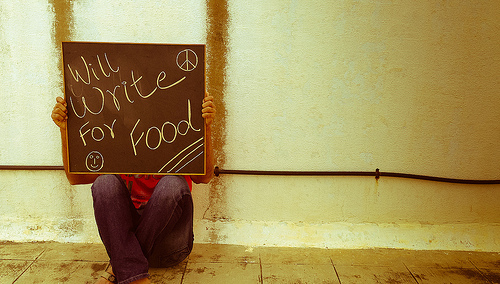
The Voice
You've probably heard about authors who need to find their voice, or the ones who already have. Your voice is really just your natural personality, and the way it appears on the page. Certain writers have their own distinct style, a way of writing that evokes certain feelings.
What I'm saying is this: funny people are more likely to write funny. People who are a little more in touch with the dark side may be great at writing horror stories or dramas. And if the past is your passion, consider writing historical novels of some type. Write your books the way you approach your life. Write about what you like, situations that intrigue you, and allow your natural personality to shine through in the narrative.
If you know who you are in life, it's much easier to figure out who you are as a writer. Always write as who you are, and you'll be a better writer.

The Voice
You've probably heard about authors who need to find their voice, or the ones who already have. Your voice is really just your natural personality, and the way it appears on the page. Certain writers have their own distinct style, a way of writing that evokes certain feelings.
What I'm saying is this: funny people are more likely to write funny. People who are a little more in touch with the dark side may be great at writing horror stories or dramas. And if the past is your passion, consider writing historical novels of some type. Write your books the way you approach your life. Write about what you like, situations that intrigue you, and allow your natural personality to shine through in the narrative.
If you know who you are in life, it's much easier to figure out who you are as a writer. Always write as who you are, and you'll be a better writer.
Published on January 08, 2014 05:30
January 7, 2014
Writing 101: Co-Authoring
All authors have strengths and weaknesses when it comes to writing a story. So what if you find an author who's strong where you're weak? When is co-authoring an option, and can it work for you?

Writing with Others
Finding another author to shore up your own work may sound like a good idea on the surface. But there are so many things to consider, even planning for it can be an overwhelming experience. And even the best-laid plans can go awry. Writing with others is difficult, and it doesn't always work out well.
In order to successfully co-author a book, you have to find an author that you can work with -- someone who, preferably, uses a style and voice similar to your own. Writing a book is a stressful process, and it requires a lot of time and thought. You need someone you can work with.
You also need to establish the parameters of the collaboration before you begin the project. How much input does the other author have into the plot, the character development, the end of the book? Are you going to write the outline and plot the story together, or do you need someone who can write what you've plotted? If you're using your own outline, you'll have to brief your co-author extensively to be sure the two of you are on the same page (pun intended).
Co-authoring has worked well for bestselling author James Patterson. He's written many novels, both stand-alone and serial installments, with other writers. Patterson has co-authored books with many authors, not just one. He has written more than one book with several of his cohorts. Co-authoring hasn't worked so well for other authors. Julia Child wrote Mastering the Art of French Cooking with two other authors, one of whom she never worked with again.
Establish the workload before you begin writing to avoid any problems later down the road. Decide who will do what and how it will be done. Work out a schedule, hammer out a plan and try to iron out all the details because problems will arise later. The more you collaborate with others, the better you will get at co-authoring.

Writing with Others
Finding another author to shore up your own work may sound like a good idea on the surface. But there are so many things to consider, even planning for it can be an overwhelming experience. And even the best-laid plans can go awry. Writing with others is difficult, and it doesn't always work out well.
In order to successfully co-author a book, you have to find an author that you can work with -- someone who, preferably, uses a style and voice similar to your own. Writing a book is a stressful process, and it requires a lot of time and thought. You need someone you can work with.
You also need to establish the parameters of the collaboration before you begin the project. How much input does the other author have into the plot, the character development, the end of the book? Are you going to write the outline and plot the story together, or do you need someone who can write what you've plotted? If you're using your own outline, you'll have to brief your co-author extensively to be sure the two of you are on the same page (pun intended).
Co-authoring has worked well for bestselling author James Patterson. He's written many novels, both stand-alone and serial installments, with other writers. Patterson has co-authored books with many authors, not just one. He has written more than one book with several of his cohorts. Co-authoring hasn't worked so well for other authors. Julia Child wrote Mastering the Art of French Cooking with two other authors, one of whom she never worked with again.
Establish the workload before you begin writing to avoid any problems later down the road. Decide who will do what and how it will be done. Work out a schedule, hammer out a plan and try to iron out all the details because problems will arise later. The more you collaborate with others, the better you will get at co-authoring.
Published on January 07, 2014 05:30
January 6, 2014
Writing 101: Writing Realistic Dialogue
Many authors excel at the flowery descriptions, the planned-out plotting, the character development. But dialogue is a whole different animal. If you want yours to be any good at all, stop writing and start listening.
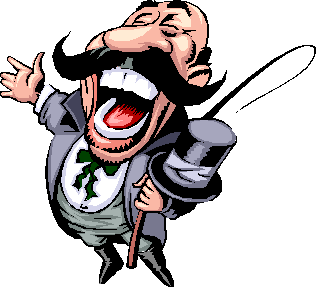
How People Talk
In the movie Young Adult, Charlize Theron is a ghostwriter who writes a popular YA series. She's also totally screwed up, but that's beside the point. In the film, there are a few funny scenes were she noticeably eavesdrops on teenage girls having casual conversation. Later, she uses what she's heard in her writing. Listening to people talk, in a non-creepy way, is totally acceptable. More than that, it's what every author ought to do.
Again, I emphasize the part about not being creepy. Don't listen in on people's intimate or personal conversations. But out in public locations when people are just chatting? Pay attention to what they're saying, and get more of a feel for how people really talk. And write that way.
You should always be writing your dialogue realistically. If you're writing about teenagers, know what teenagers are saying and how they speak to each other. If there aren't any teens handy and the mall is too far away, get on Twitter. Go into a chatroom. See what the teens are saying to get a feel for their language. If you're writing about someone elderly, listen to some elderly folks speak. Go to a nursing home, or to a McDonald's early in the morning, and listen.
As a writer, you should always be listening. This is the only way you can learn to write real dialogue. If you listen enough, you'll be able to hear your characters talking while you write the dialogue. Then, you'll know if it sounds real or not. When you're done writing, go back and read your dialogue out loud. Great dialogue takes a lot of work, but if you can learn how to do it you'll always have people willing to read what you write.

How People Talk
In the movie Young Adult, Charlize Theron is a ghostwriter who writes a popular YA series. She's also totally screwed up, but that's beside the point. In the film, there are a few funny scenes were she noticeably eavesdrops on teenage girls having casual conversation. Later, she uses what she's heard in her writing. Listening to people talk, in a non-creepy way, is totally acceptable. More than that, it's what every author ought to do.
Again, I emphasize the part about not being creepy. Don't listen in on people's intimate or personal conversations. But out in public locations when people are just chatting? Pay attention to what they're saying, and get more of a feel for how people really talk. And write that way.
You should always be writing your dialogue realistically. If you're writing about teenagers, know what teenagers are saying and how they speak to each other. If there aren't any teens handy and the mall is too far away, get on Twitter. Go into a chatroom. See what the teens are saying to get a feel for their language. If you're writing about someone elderly, listen to some elderly folks speak. Go to a nursing home, or to a McDonald's early in the morning, and listen.
As a writer, you should always be listening. This is the only way you can learn to write real dialogue. If you listen enough, you'll be able to hear your characters talking while you write the dialogue. Then, you'll know if it sounds real or not. When you're done writing, go back and read your dialogue out loud. Great dialogue takes a lot of work, but if you can learn how to do it you'll always have people willing to read what you write.
Published on January 06, 2014 05:30
January 5, 2014
Meet Me at Smashwords
Published on January 05, 2014 11:30
Indie News: What Did You Miss in eBooks in 2013?
Thanks to the wide availability of smartphones and tablets, things are happening quickly in the world of self-publishing...maybe too quickly. What did you miss in the market in 2013?
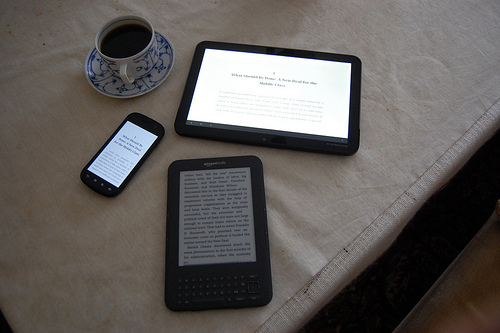
Looking Back
If you weren't keeping an eye on self-publishing news in 2013, you missed a few big events. The year was packed with precedents in an industry that's still finding its way.
One of the most notable incidents was the Apple ebook conspiracy. The company actually went to trial for being in cahoots with publishers to raise the cost of ebooks. Seriously, that happened. There were 5 companies named in the conspiracy, all of which settled before the trial. Apple didn't, and they were found guilty of violating anti-trust laws. And get this, several publishers filed motions saying that any action against Apple would actually end up hurting them.
So in August, a judge assigned a monitor to look over Apple's shoulder and make sure the company doesn't again attempt to fix ebook prices. But Apple countered with legal action against the person who was appointed, so the status of this watchdog is currently unknown (to me, anyway, and you're welcome to do the research). Either way, the average price of ebooks lowered in 2013 instead of going up. It's down to about $7, compared to $13 in 2012.
So while Apple was dealing with criminal charges, Amazon was facing civil court. The company was sued by three physical bookstores (known as brick-and-mortar) for forcing them out of the market. The judge threw the case out, but it still made headlines in 2013.
Two programs appeared in 2013 that are definitely going to change the future of ebooks. Amazon introduced the Matchbook program which allows users to purchase digital copies of print books they own at a discounted rate. Meanwhile, Oyster launched. This program is a bit like a Netflix for ebooks. It's a sharing library with more than 100,000 titles, and it's growing. The idea launched iStoryTime, a similar service that provides children's books.
And through the year, Nook continued to lose money. The device's steady decline could be a sign that it will soon go the way of the VHS.
What you missed in ebooks in 2013 could dictate how you market and sell your books in 2014. So get caught up on the now, and you'll be better prepared for tomorrow.

Looking Back
If you weren't keeping an eye on self-publishing news in 2013, you missed a few big events. The year was packed with precedents in an industry that's still finding its way.
One of the most notable incidents was the Apple ebook conspiracy. The company actually went to trial for being in cahoots with publishers to raise the cost of ebooks. Seriously, that happened. There were 5 companies named in the conspiracy, all of which settled before the trial. Apple didn't, and they were found guilty of violating anti-trust laws. And get this, several publishers filed motions saying that any action against Apple would actually end up hurting them.
So in August, a judge assigned a monitor to look over Apple's shoulder and make sure the company doesn't again attempt to fix ebook prices. But Apple countered with legal action against the person who was appointed, so the status of this watchdog is currently unknown (to me, anyway, and you're welcome to do the research). Either way, the average price of ebooks lowered in 2013 instead of going up. It's down to about $7, compared to $13 in 2012.
So while Apple was dealing with criminal charges, Amazon was facing civil court. The company was sued by three physical bookstores (known as brick-and-mortar) for forcing them out of the market. The judge threw the case out, but it still made headlines in 2013.
Two programs appeared in 2013 that are definitely going to change the future of ebooks. Amazon introduced the Matchbook program which allows users to purchase digital copies of print books they own at a discounted rate. Meanwhile, Oyster launched. This program is a bit like a Netflix for ebooks. It's a sharing library with more than 100,000 titles, and it's growing. The idea launched iStoryTime, a similar service that provides children's books.
And through the year, Nook continued to lose money. The device's steady decline could be a sign that it will soon go the way of the VHS.
What you missed in ebooks in 2013 could dictate how you market and sell your books in 2014. So get caught up on the now, and you'll be better prepared for tomorrow.
Published on January 05, 2014 05:30
January 4, 2014
Books on Film: Girl, Interrupted
Susanna Kaysen published Girl, Interrupted in 1993. The book is based on her own life, experiences she had during the 1960s as a young woman. The best-selling book gained even more fame later in the decade when Winona Ryder and Angelina Jolie, among an ensemble cast, made a movie about it.
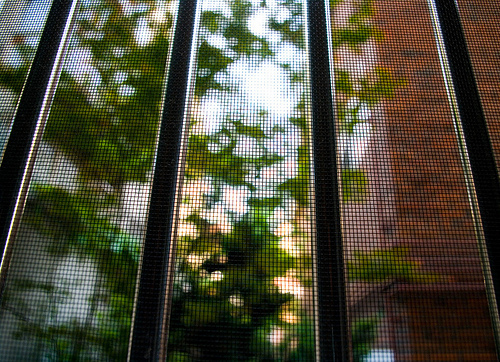
The Book
Girl, Interrupted is well-written, but it's a bit hard to follow because it doesn't follow a linear story. The book details Susanna's stay in a mental hospital after receiving a diagnosis of borderline personality disorder. She lived for nearly two years at McLean, and later obtained her file from the hospital.
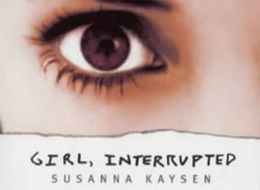
The book is a collection of stories about her life in the hospital and before her admittance. The theme of freedom is a running thread throughout. She was 18 in 1967, a tumultuous time for many people in the United States. She was admitted to the hospital after a suicide attempt, and a stay that was meant to be a couple of weeks extended to 18 months.
Cynthia, Polly, Georgina, Daisy and Lisa are also at the hospital, and figure prominently in the book. Some staff members, including Dr. Wick and Valerie, are also central characters in the story. Lisa Rowe is one of the more fascinating patients in the hospital, self-proclaimed as a diagnosed sociopath. She leaves the hospital often but is returned after only a few days, rarely eats or sleeps and gets a rise out of terrorizing the staff. Polly Clark is disfigured and scarred following a childhood incident in which she set herself on fire.
Georgina Tuskin has schizophrenia, and she's Susanna's roommate. They're good friends throughout the story, though Georgina calls herself a pathological liar. Daisy Randone stays in the hospital from Thanksgiving to Christmas every year, and spends most of her time inside her private room. Daisy peels the meat off of chickens and keeps the carcasses until she has 14. This is how she knows it's time to leave the hospital. Only Lisa can enter Daisy's room. Later, she commits suicide on her birthday.
The book extends beyond Susanna's stay in the hospital, detailing her difficulty in finding a job as a former mental patient. She keeps in contact with Georgina, who gets married but remains somewhat strange. Susanna runs into Lisa by chance one day. She's now a respectable suburban mother, but beneath this polish Susanna can see remnants of the old Lisa.
The Film
As Susanna, Winona Ryder was meant to be the star of Girl, Interrupted, but Angelina Jolie is the one who stood out as Lisa. Susanna is staying at Claymoore Hospital in the movie. Clea DuVall plays Georgina, Brittany Murphy is Daisy and Whoopi Goldberg plays nurse Valerie.
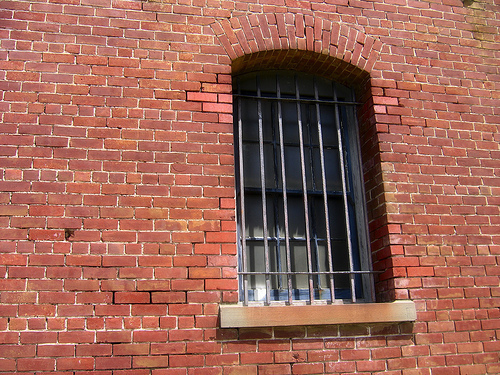
In the movie, Susanna is instantly drawn to lively Lisa and the two start perpetrating antics at once. They trade pills instead of taking them, sneak into the doctor's office and play guitar in the hall in the middle of the night. After they're caught from this incident, Lisa disappears and Susanna becomes depressed.
Lisa returns one night and breaks Susanna out of the hospital. They go to Daisy's house, because she's been recently released from the hospital at this point, and Lisa needles her. In the morning, Daisy is discovered dead.
Susanna decides to use the institution after this, expressing her thoughts and feelings until she is released.
What Got Adapted?
The movie presents a pretty clear-cut plot, which the book does not. The new organization of the narrative erases much of Susanna's musings about the nature of sanity and freedom, so some of the themes of the story are lost in translation.
Some elements of the movie's narrative are entirely invented. The night that Susanna and Lisa run away, and the night before Susanna leaves the hospital, are fabricated. Lisa's character is expanded on film, possibly to give watchers more of Jolie, and Georgina's role is lessened for the movie. Daisy's story is expanded and altered, and Valerie's character is changed almost completely.
The ice cream scene is also added (clearly, as this would never happen), and the bowling alley scene never happened in the book. The movie is so different, in fact, that the author herself has denounced it and fans of the book have criticized it roundly. Read the book and watch the film to judge for yourself whether the adaptation is any good.

The Book
Girl, Interrupted is well-written, but it's a bit hard to follow because it doesn't follow a linear story. The book details Susanna's stay in a mental hospital after receiving a diagnosis of borderline personality disorder. She lived for nearly two years at McLean, and later obtained her file from the hospital.

The book is a collection of stories about her life in the hospital and before her admittance. The theme of freedom is a running thread throughout. She was 18 in 1967, a tumultuous time for many people in the United States. She was admitted to the hospital after a suicide attempt, and a stay that was meant to be a couple of weeks extended to 18 months.
Cynthia, Polly, Georgina, Daisy and Lisa are also at the hospital, and figure prominently in the book. Some staff members, including Dr. Wick and Valerie, are also central characters in the story. Lisa Rowe is one of the more fascinating patients in the hospital, self-proclaimed as a diagnosed sociopath. She leaves the hospital often but is returned after only a few days, rarely eats or sleeps and gets a rise out of terrorizing the staff. Polly Clark is disfigured and scarred following a childhood incident in which she set herself on fire.
Georgina Tuskin has schizophrenia, and she's Susanna's roommate. They're good friends throughout the story, though Georgina calls herself a pathological liar. Daisy Randone stays in the hospital from Thanksgiving to Christmas every year, and spends most of her time inside her private room. Daisy peels the meat off of chickens and keeps the carcasses until she has 14. This is how she knows it's time to leave the hospital. Only Lisa can enter Daisy's room. Later, she commits suicide on her birthday.
The book extends beyond Susanna's stay in the hospital, detailing her difficulty in finding a job as a former mental patient. She keeps in contact with Georgina, who gets married but remains somewhat strange. Susanna runs into Lisa by chance one day. She's now a respectable suburban mother, but beneath this polish Susanna can see remnants of the old Lisa.
The Film
As Susanna, Winona Ryder was meant to be the star of Girl, Interrupted, but Angelina Jolie is the one who stood out as Lisa. Susanna is staying at Claymoore Hospital in the movie. Clea DuVall plays Georgina, Brittany Murphy is Daisy and Whoopi Goldberg plays nurse Valerie.

In the movie, Susanna is instantly drawn to lively Lisa and the two start perpetrating antics at once. They trade pills instead of taking them, sneak into the doctor's office and play guitar in the hall in the middle of the night. After they're caught from this incident, Lisa disappears and Susanna becomes depressed.
Lisa returns one night and breaks Susanna out of the hospital. They go to Daisy's house, because she's been recently released from the hospital at this point, and Lisa needles her. In the morning, Daisy is discovered dead.
Susanna decides to use the institution after this, expressing her thoughts and feelings until she is released.
What Got Adapted?
The movie presents a pretty clear-cut plot, which the book does not. The new organization of the narrative erases much of Susanna's musings about the nature of sanity and freedom, so some of the themes of the story are lost in translation.
Some elements of the movie's narrative are entirely invented. The night that Susanna and Lisa run away, and the night before Susanna leaves the hospital, are fabricated. Lisa's character is expanded on film, possibly to give watchers more of Jolie, and Georgina's role is lessened for the movie. Daisy's story is expanded and altered, and Valerie's character is changed almost completely.
The ice cream scene is also added (clearly, as this would never happen), and the bowling alley scene never happened in the book. The movie is so different, in fact, that the author herself has denounced it and fans of the book have criticized it roundly. Read the book and watch the film to judge for yourself whether the adaptation is any good.
Published on January 04, 2014 05:30




